Pure players in the US home shopping market have found the trail to profit growing cold while even bricks and mortar based grocers struggle with the logistics. Helen Gregory reports
The US was into home shopping long before Tesco Direct vans were racing through Britain's leafy suburbs. Dotcom firm Peapod blazed a trail in the early 'nineties and its initial success inspired a raft of internet start-ups keen to target time-starved shoppers.
But now many of these firms are struggling to pull in customers and cash some are even forking out up to 60% of sales on marketing while Tesco is being cited by US analysts as the best in class. The UK chain meanwhile is even looking to break into the American market by hooking up with a US company and has recently been rumoured to have licensed its IT technology to the American grocery chain Albertsons.
The latest trauma to beset the US industry is the resignation of Webvan CEO George Shaheen who bailed out after concluding "a different kind of executive is needed to lead the company at this time". He has left Robert Swan, Webvan's chief operating officer, in charge until a new CEO is hired.
US internet consultant Mike Liebson, vice president at HighPoint Systems, says pure players such as Streamline, Netgrocer and Webvan are on the way out. "Most of them have either been acquired or gone out of business. Webvan is fighting for its life."
Supermarket chains are now belatedly joining the party, leveraging their brand to sell online in a way that no dot.com can. Of those trying out multi-channel retailing, the US Safeway has bought online grocer Groceryworks to get instant net expertise, while Italian retailer Parmalat has invested $20m in Netgrocer and is carving out a niche working with fmcg companies.
Kroger is dipping a toe in the water in the shape of a small instore picking operation in Denver, while Albertsons is being more ambitious with its two set-ups in Seattle and Dallas. Publix has announced one of the most ambitious programmes, with three 120,000 sq ft warehouses in Fort Lauderdale, Orlando and Atlanta.
Kmart, which sells mainly general merchandise, along with some groceries, recently raised $140m for its online venture BlueLight.com. It offers hundreds of thousands of SKUs and aims to bring in $100m of revenue this year. However, its CEO has already warned that it would be wrapped back into Kmart if it doesn't meet the target.
Peapod itself was perched on the brink of collapse early last year following the abrupt departure of its former CEO and failure to gain an expected round of venture capital investment. But last April the company got a fresh infusion of cash when Ahold invested $73m in exchange for a majority ownership stake.
During the last year, the two firms have been moving the grocery delivery service away from personalised shopping and focusing on using warehouses and storage space in Ahold-owned stores to stock goods for Peapod customers.
The company says that through its tie-up with Ahold it can leverage the Dutch giant's purchasing power to buy in goods cheaper and achieve operating efficiencies. Its immediate expansion plans are focused along the East Coast in markets where Royal Ahold's stores have a strong presence.
Curt Avallone, vice president of business development and e-commerce for Ahold USA, says: "Peapod started out in partnership with nine retailers as it thought people were more likely to trust brands, but once they'd used the service, consumers decided they trusted the Peapod name so they ditched the retailers, the capital disappeared from the market and they joined up with Ahold."
Peapod now has about 135,000 customers in the US who spend an average of $125 per order, a total of 20,000 times a week in its five metropolitan areas: Chicago, Boston, Southern Connecticut, Long Island, and Washington DC. It offers between 8,000 and 15,000 SKUs.
However, it recently shut down operations in four cities Columbus, Ohio, Austin, Houston, and Dallas in an effort to develop a cheaper, more efficient system for filling orders. It also announced the closure of its distribution centre serving San Francisco in order to focus exclusively on pursuing its clicks and bricks business strategy.
The increasingly buoyant company now aims to reach profitability by the end of 2003 and a spokeswoman adds: "From where we stand, demand is strong and growing. We experienced record sales in our markets in the fourth quarter and business has ramped more quickly than expected in our two newest markets (Connecticut and DC). Peapod is well positioned to capture a significant share of this volume."
Peapod also offers shoppers the chance to order online and pick up from the store which makes up about 10% of its business at a discount and Avallone believes this could be made more attractive by offering free groceries or fuel as an incentive. But he admits most people in the US are looking for a breakthrough or a better logistics model in a bid to make their venture more worthwhile. Avallone admits that about three deliveries an hour are needed to make a business profitable, but that this can be difficult because of the layout of most US cities there are also only about 400 households per square mile, making delivery a challenge.
And alongside this, unlike their British counterparts, American stores have a much worse out of stock rate usually only stocking an average of 92%-94% of products compared with the British average of 98%-plus.
"Our stores like most in the US have an average out of stock rate in store of 6%-8%, and if this happens to online orders it doesn't go down well," admits Avallone. Ahold's research found that 40% of those using the service in 1999 had stopped within the year, due, it thinks, to this dissatisfaction. It also realised that substituting items wasn't the answer and once it let customers decide on their own substitutions, orders went up by $6 a basket.
Avallone adds: "We tried cutting out our $8.95 delivery charge to go head on with a cut-price competitor in Boston but we had to put the delivery charges back up when the figures just didn't stack up. I think unattended deliveries will be the way forward for us."
Despite seeing Peapod's trials and tribulations, the dotcom firm Webvan started up in the San Francisco area in June 1999. It is now in nine metropolitan areas -- San Francisco, Sacramento, Atlanta, Chicago, San Diego, Orange County, Los Angeles, Seattle and Portland, operating warehouses in each area, carrying about 20,000 SKUs.
Although Webvan says it now has more than 640,000 active customer accounts, an increase of more than 22% from the end of last year, times have not been easy for the firm. It recently closed its Dallas operation "to conserve operating capital and focus on the profitability of its nine other markets" and also indefinitely postponed the commercial launch of webvan.com in Northern New Jersey, Baltimore, and Washington, DC.
In its recently published annual report, Webvan said it would probably need to raise an additional $5m-$15m by this year's final quarter, and as much as $60m to stay in business long enough to meet its goal of turning a profit during the second half of 2002. Its dismal report included a warning from its auditor expressing "substantial doubt" about the company's ability to make it through this year. Analysts reckon Webvan has lost $610.8m since 1998.
The firm insists, however, that repeat orders represented 86% of total orders during the fourth quarter, with the average order size approximately $112, an increase of 9%.
The company bought home shopping rival HomeGrocer.com last autumn which more than doubled its market reach as well as launching its b2b enterprise Webvan@Work. Under the initiative, it signs up small and mid-sized businesses and regularly delivers basic office services such as office supplies, cleaning supplies, snacks and lunches. Webvan@Work now accounts for approximately 6% of Webvan's revenues and 15% of the revenue of Webvan's Northern California market.
Another Webvan initiative was the signing of strategic business alliances with three major consumer product companies: The Clorox Company, Kimberly-Clark, and Nabisco. Executives said this would open new brand-building opportunities for the three firms and allow Webvan to "design a powerful and personalised new shopping experience for consumers". It should also give Webvan significant support in such critical areas as product assortment, merchandising, marketing, and supply-chain management.
The company already had tie-ups with Kellogg, Nestlé USA, Pillsbury, and Quaker Oats. Apart from groceries,Webvan also has a pet store, drug store, baby store, book store, and does party planning. A spokesman says: "Webvan can bring greater value to its customers through product offerings and promotions that are tailored to targeted consumers a key strategy to acquire and retain new customers and to increase order size.
"The firms gain key insights into the emerging online channel, while having the opportunity to test and develop virtual merchandising strategies, online marketing programmes, and new consumer behaviour models. It also gives them a national platform to build their brands through superior data collection and analysis."
He adds that the company has no plans to expand in the near future, but will conserve cash and get markets to profitability, although it hasn't ruled out expanding overseas.
Despite the firm's assurances, analysts are not convinced. Strategy consultant Roland Berger says online grocers usually fail because they don't focus on the target consumer, do not have enough established brands and push for too much, too soon. It says Webvan's San Francisco warehouse handles 2,000 orders a day but is equipped to handle 8,000. The firm aimed at an order frequency target of 35 times a year, it adds, but is only getting six.
Gerald Corbae, associate partner with Roland Berger, says he rates Peapod's chance of success as better because of its link with Ahold, but says all the dotcoms must make a go of it in the next one or two years. "They struggled from one round of investment to the next and they can't keep doing that."
Corbae says bricks and mortar firms wanting to go into online shopping have an easier time of it. "Webvan has huge infrastructure costs with its dedicated warehouse structure. All the pure players are going for dedicated warehouses, but that will only work in urban areas in the US."
Despite the obvious drawbacks, and the fact that just 9% of US households buy more than $100 worth of groceries each week, but only 0.5% buy groceries online, Tesco is convinced that it can make a go of it across the Atlantic, and its computer systems head, Paul Arnold, says the economics are better in the US.
"There are more dual income families, more households with disposable income, PCs and internet access," he says. "Staff wages are lower, picker productivity is usually better because shops are quieter, fuel is cheaper for deliveries and there's less road congestion."
Arch UK rival Sainsbury is less keen, however. Group director of e-commerce, Patrick McHugh, says the chain has had a "good look" at the US market. But adds: "We've not launched out there and the drop rate in US cities is half that in the UK because of the way they're laid out we can get seven or eight compared with three or four.
"We're not about to go in with Shaws because we can't find a logistics model that would work in the US."
The US home shopping market was worth $25.8bn last year and is forecast by PricewaterhouseCoopers to rise to $100.7bn by 2005, but grocery is only about 6% of the total and is not thought to be set for growth of more than 1%-2%. Mary Brett Whitfield, director of e-retail intelligence systems at PWC, says even when companies trialled unattended deliveries such as Streamline and Shoplink it failed and both firms went under. "Our research found that people want to pick up ordered groceries at the store, but that's a difficult proposition for retailers because of the pickers competing with consumers."
She says many now try to encourage shoppers to increase their basket size or order more frequently.
That aside, it appears that multi-channel retailing has the advantage. "I don't see any major initiatives by people who aren't already in the business. We won't have any announcements in the next few years anywhere as ambitious as Webvan. People have realised that consumer behaviour isn't moving as fast as technology."
{{COVER FEATURE }}
Close menu
- Home
- Retail & Wholesale
-
Products & Suppliers
- Back to parent navigation item
- Products & Suppliers
-
Product Categories:
- Back to parent navigation item
- Product Categories:
- Alcoholic drinks
- Bakery
- Cereals & breakfast
- Cheese
- Chicken & poultry
- Chocolate
- Confectionery
- Crisps, nuts & snacks
- Dairy
- Fish
- Fresh produce
- Frozen
- Household
- Meat
- Own Label
- Sauces & condiments
- Seasonal
- Soft drinks
- Vaping
- Vegan & plant-based
- World foods
- Suppliers
- People
- Reports & Data
-
Topics A-Z
- Back to parent navigation item
- Topics A-Z
-
Popular topics:
- Back to parent navigation item
- Popular topics:
- Cost of living crisis
- Crime
- Deposit Return Schemes
- Finance
- Government & Regulation
- Health
- Inflation
- Loyalty
- Marketing
- Mergers & Acquisitions
- New Product Development
- Sourcing
- Supply chain
- Sustainability & environment
- Technology
- Ultra Processed Foods
- Vaping
- A-Z all topics
- Content by type:
- Events
- Subscribe now
Sign in to comment on this article
Not logged in before? Register for FREE guest access today.
You will be able to:
- Read more stories
- Receive daily newsletters
- Comment on stories
Advert




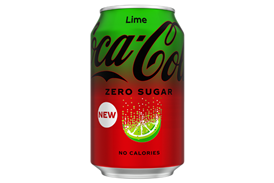



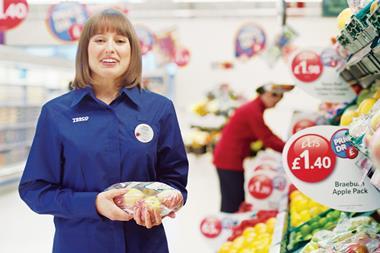

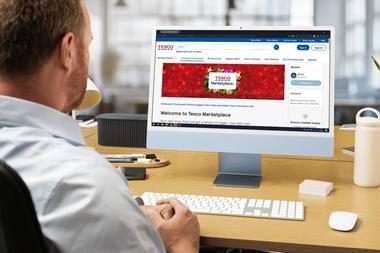

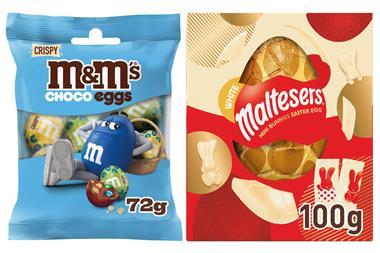

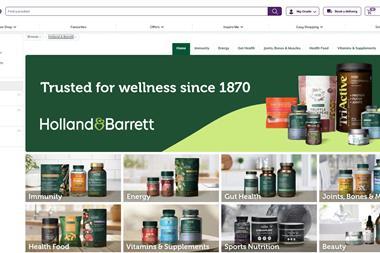
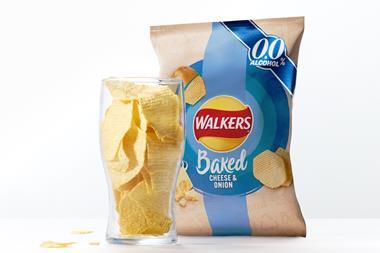



No comments yet